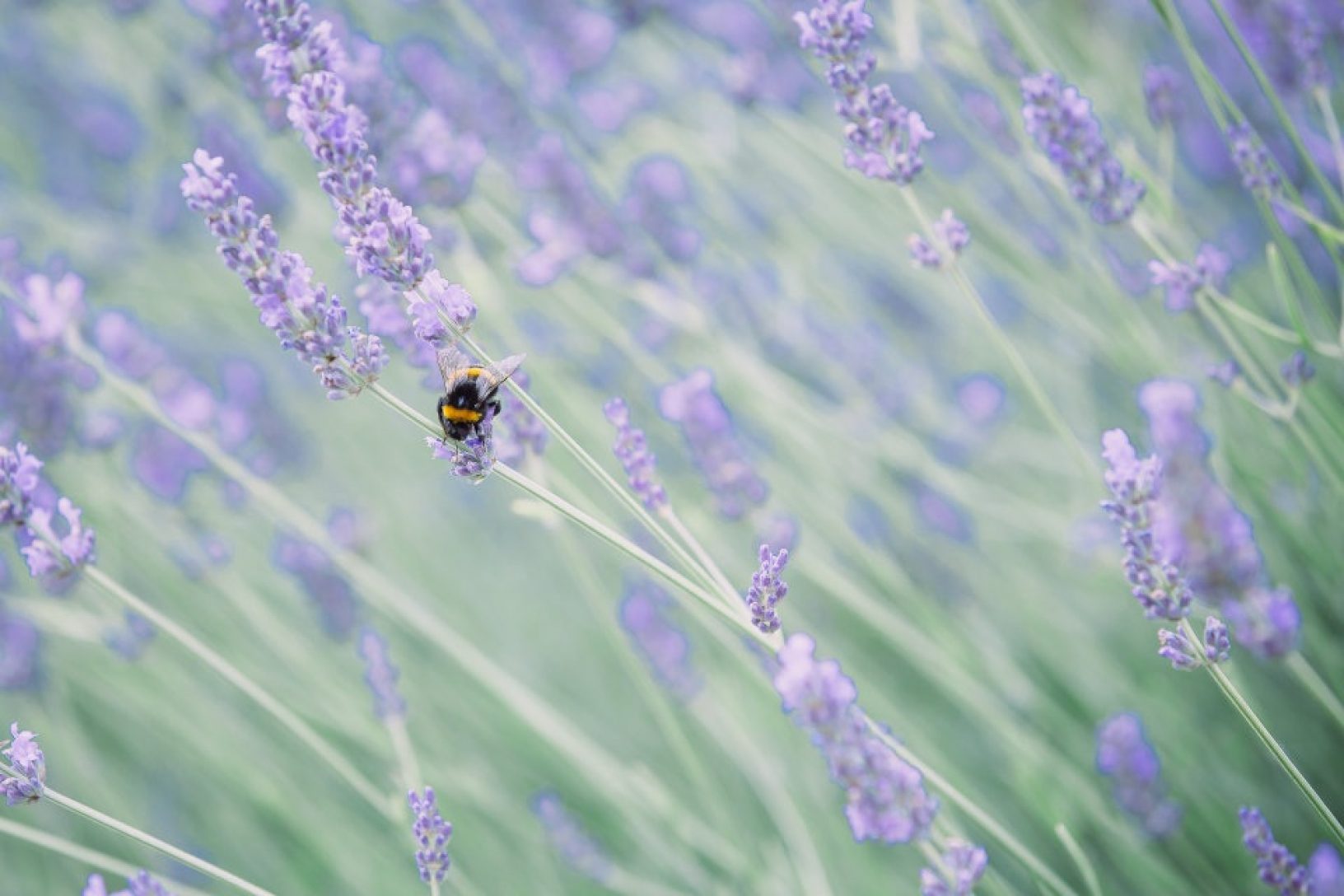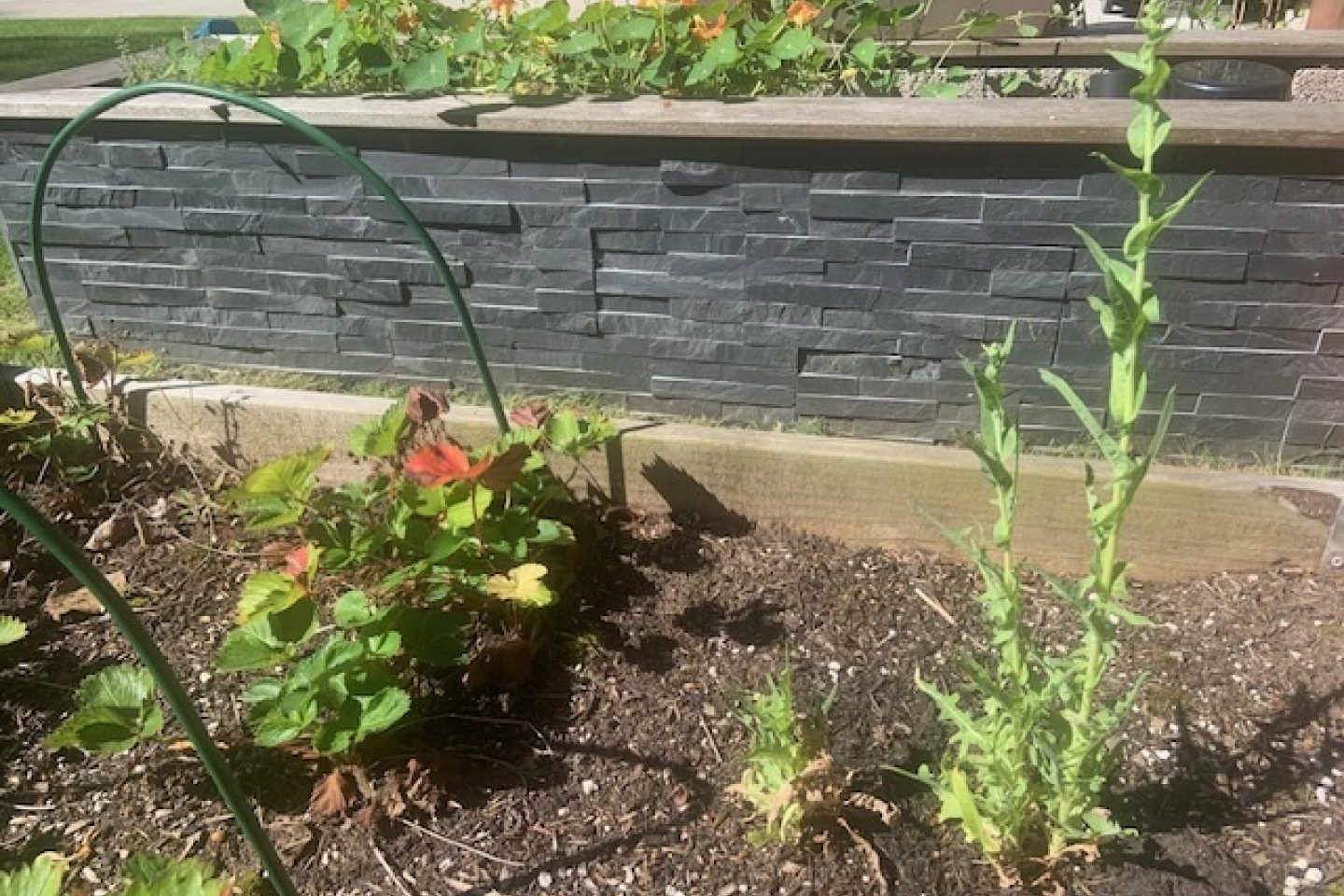Any missing words?
Is there any gardening word of term you would like to know about that is not on this page? Send us an email, we will be happy to help.

Annual
A plant that completes its whole life cycle in one year - germinating, flowering and setting seed. The plant then dies. Common examples are marigolds, sunflowers and nasturtiums.

Biennial
A plant that germinates from seed, that grows, flowers and sets seed all in two years. The plant then dies. Common examples are foxgloves and columbine (aquilegia).
Bolting
A food plant that goes very quickly to seed. This means it is at the end of its life and can no longer be used for food. Lettuce and spinach and two examples where this can easily happen.

Crop rotation
Used in vegetable plots to avoid growing the same crop in the same place year after year.
If crops are not rotated, over time the soil can lose certain nutrients and have an increased risk of disease. Planning how to rotate crops is often done by grouping crops into different types. A very basic way to do this is based on the part we eat – the fruit or seeds, roots and leaves. By changing the type of crop each year, using these groupings, growers can help the chance of getting a good harvest.
Cut and come again
This is usually used to describe some varieties of salad. When cut regularly, they will keep producing more edible leaves (i.e. you can 'come again' and harvest!)
Earthing up
This is most commonly heard when growing potatoes. As potatoes grow, they need to be 'earthed up.' This basically means covered with a big layer of compost. This stops the tubers being exposed to the light and turning green. Green potatoes are poisonous.
Earthing up is often done several times as potatoes grow - especially when growing in bags.
Leeks and celery are also earthed up to produce whiter stems.

Established
Plants that live longer than one year can become 'established' after planting. Being established means taking root and successfully producing new growth. Many plants will become established within a year, although trees may take longer. The time between planting and establishing is when plants generally need extra care - usually through watering.
A whole garden can also be described as 'established'. This usually means plants have had time to grow bigger, there is less bare soil and everything has the sense that it's been there for a little while.
Green manure
This is completely different to animal manure. Green manure comes from plants. You get it by growing certain crops on a bare part of your vegetable patch. This is most commonly done over winter. These can be dug into the soil in early spring to improve soil fertility. Some suitable plants include: broad or fava bean, grazing rye (Seakale cereal), winter tares (Vicia sativa) and various clovers.
Hardening off
This is the process of letting plants that started growing inside, or under heat, become accustomed to conditions outdoors. It is important for tender plants (ones that don't survive in cold weather) and if you are moving houseplants outdoors. Otherwise, the shock of cooler conditions outside can damage them.
You can harden off your plants by putting them in a cold frame and leaving the lid open for short periods, gradually increasing the time. Or you can put plants outside for short and then gradually longer periods in the warmer part of the day. Try to harden off when frosty weather is over. Most years, this is from May onwards.

Hardy plants
These survive the winter unprotected. Some plants are half-hardy and will need protection. Tender plants will not survive any exposure to frost.
Horticultural fleece
A lightweight material that can be used to cover and warm the soil, or to protect crops against frost/cold or as a barrier against pests. It is usually available from garden centres.
Horticultural membrane
A large, permeable (i.e. water can get through it) piece of material. It is useful to lay over areas of soil you are not using, as it helps protect bare soil and reduce weed growth. Some people keep it down all year around, cutting cross shape slits in the membrane to plant through. A shallow mulch, e.g. bark chippings, over the top helps hide the membrane and make it look nicer.
Intercropping
Sowing or planting fast-growing crops between or next to slower-growing crops. This helps make the most of space, as the fast-growing crop can be harvested and cleared before the slower crop needs the extra space. Examples are lettuces with broad beans or radishes with parsnips.
Liquid feed
This type of plant feed is usually sold as a concentrate or as soluble granules or powders that you dissolve in water. You can then water it onto moist soil or compost. Feeds contain the correct nutrients to support plants, particularly as they flower or produce fruit. There are different types available, including organic feeds and special tomato feeds.
Mulch
Material used to cover the soil. Common organic mulches are garden compost, shredded bark and cocoa shells. Mulching can help reduce weed growth and keep the moisture in the soil.
A good time to spread mulch is in spring, when the ground is wet. A good thick layer, at least 5cm thick, is recommended.
No-dig gardening
If you would like to avoid digging in the garden, you could try the no-dig method. There are many people who think avoiding digging is actually much better for the health of the soil. It also saves energy and avoids strain, which may be helpful for people with a wide range of health conditions.
A very thick layer of compost, and usually straw, is put over the ground and plants are planted into this. The action of worms and micro-organisms ‘do their bit’ and you can hang up your spade!
Node
A node is any point in the stem of a plant that buds, leaves and branches grow from. You can often spot them as the node typically creates a little bump in the stem. Being able to identify nodes is important if you are propagating plants through techniques including semi-ripe cuttings.

Offset
An offset, sometimes known as a “pup”, is a miniature version of the parent plant. It is genetically identical to the parent. Some plants, particularly succulents, can be propagated with offsets. This is a low-cost way to produce more plants.

Organic growing
Gardening without using chemical fertilisers, pesticides, herbicides and other treatments. Crops are kept healthy by using good practice such as crop rotation, composting, and companion planting. You can also buy organically produced seeds.
Perlite
A mineral that has been heat-treated to expand and become lightweight. It can be mixed with compost to improve aeration and drainage of the soil. Vermiculite is a similar material that can hold a lot of water.
Perennials
Plants that go on growing year after year. There are some different types of perennials, which you may see mentioned. Common ones include:

Plug Plants
Small plants that have germinated and are ready to plant in the garden. You can usually buy these from garden centres. They are a cost effective way to add plants to your garden, alongside growing from seed yourself.
Potting on
Moving a young plant from a smaller pot into a bigger pot. This is usually needed for plants that grow very quickly, like tomatoes. Some people pot on more than once before the plant is moved to its final position.
Pricking out
Moving or transplanting seedlings into individual pots so they have enough space to keep growing. This is typically done as the next step after sowing small seeds like lettuce or tomatoes into a large seed tray.

Propagation
A way of growing new plants from existing ones. This could be by sowing seeds, or by vegetative propagation i.e. by taking cuttings or dividing plants.
Seed leaves
The first pair of leaves produced by a seedling. These are a simple shape. The 'true' leaves come through next. You can tell these apart from the seed leaves, as they will have the characteristic shape you would expect from the mature plant.
Successive sowing
Sowing seeds for the same crop over a period of time, instead of all at once. This can prevent the crop maturing all at once and producing a ‘glut’. It is often used with fast-growing crops such as lettuce, radish, spinach and turnips.
As a general rule, sow a moderate amount of seed and sow the next amount when the first seed has started to show, and so on.
Tender plants
Plants that will not survive outside in cold weather. Tender plants will often get killed by a very light frost. Canna lilies and dahlias are examples of tender plants.
Thinning out
Deliberately removing small plants that have germinated too close to each other. This gives the ones that remain the space to grow properly. This is commonly done with food plants, such as carrots and radishes. Because they have small seeds, it can be quite easy to accidentally sow too many.
Is there any gardening word of term you would like to know about that is not on this page? Send us an email, we will be happy to help.